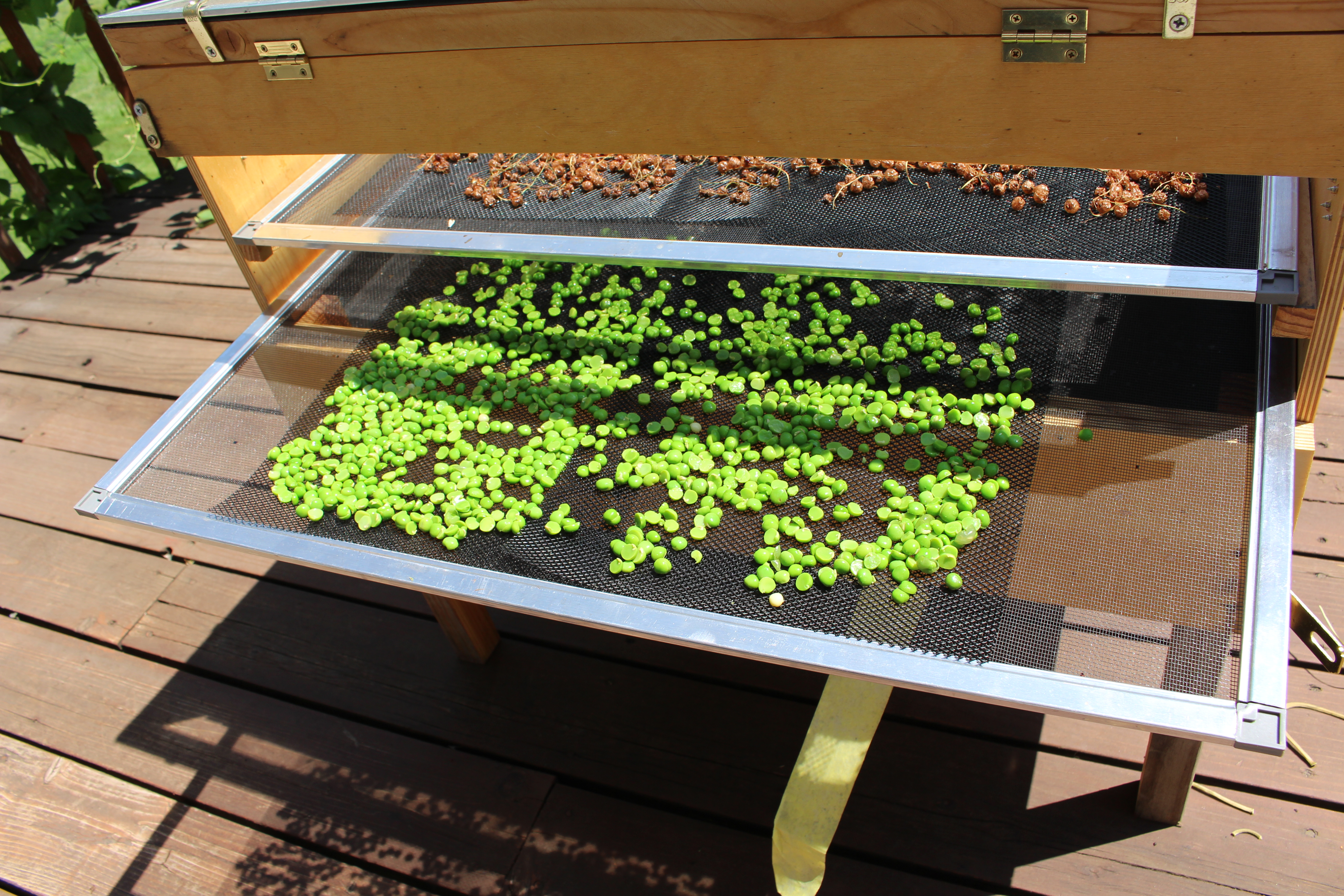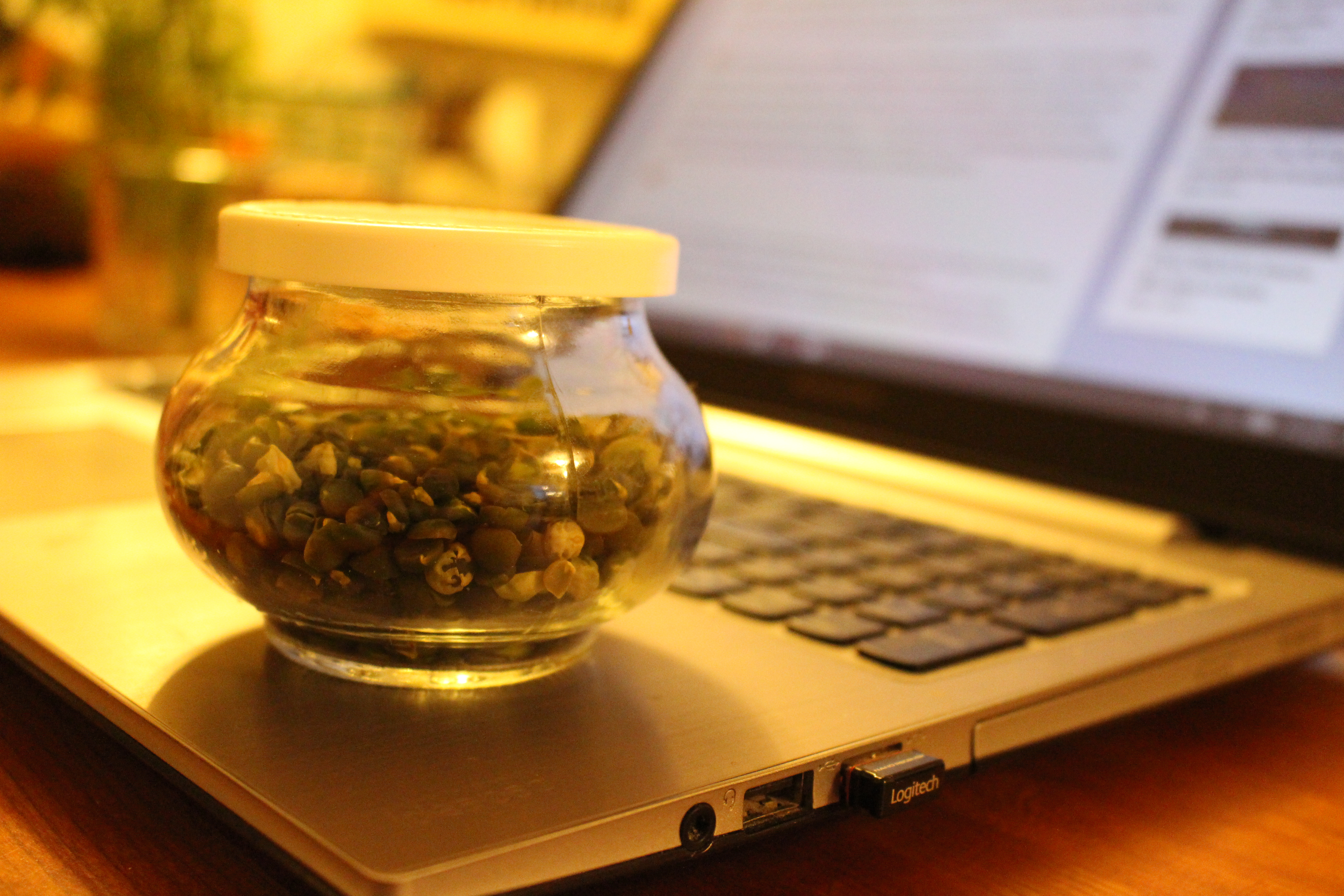Carla was right. Don’t try this at home.
I had a wonderful garden of peas this year, so much so that I had accumulated a couple quarts of shelled peas in my fridge drawer. There they sat—tossed by the handful into stir fry and omelet. Short of creating a year’s worth of fresh pea and mint soup, I was challenged when these nice fresh peas began to age. After a week, they are not as tasty as just picked, so I was intent on doing something . . . and soon.
What was I to do? Blanch and freeze? Or . . . maybe I could dry them to make my favorite pea soup. However, they did need to be split. And that is where the canker gnaws. (Sorry to quote Shakespeare. I’m an English major, remember.)
I spent a good half day (OK, exaggeration, just about 2 hours) scouring the internet for clues about how to do this at home. No luck. I found descriptions of how the process was accomplished in a manufacturing plant, with the dried peas shot with force onto a hard surface, then sifted to remove the hulls.
Someone from a very gourmet site shared the jubilation of eating fresh peas that had been de-skinned, hearkening back to the French Court. (Ladies in waiting had steamed bowls prepared for them at bedtime apparently. No wonder there was a Revolution!)
After paging through my dusty homesteading books, I was crestfallen to learn that my favorite homestead goddess, Carla Emery (RIP), pronounced split peas as beyond home skills and best bought for 52 cents a pound at the grocery store.

One helpful thing I did learn is that after freed from the skin, the pea will naturally split. Combining all this research along with some information about baking soda used in de-skinning favas, I arrived at a solution. I was jubilant as I proclaimed to Mr. Artifact that Carla was wrong and that I would teach the world how to make dried split peas. Check here for my fava bean success story.
I was very happy with myself.
Then I did it!
And then I got a repetitive motion injury on my wrist/thumb. (Seriously, I had to put a heating pad on my right hand at 3 am. At this moment, it is interfering with my grasp of my wine glass!)
And then my quart of peas turned into about a half cup of dried split peas.
I have to admit now that Carla was right. However, if you need to know how to do this in the event of a Zombie Apocalypse, with no grocery stores and King Louis XIV set to visit, here it is!
And, of course, this will not be your need. However, I am taking some pleasure in being the only post on the entire humongous World Wide Web that has a complete explanation of how to do this!
Ingredients
- ½ to 1 quart shelled fresh peas
- 2 quarts water
- 1 T baking soda
Method
- Bring water to boil
- Add soda
- Add peas
- Boil for 2 minutes or until you see the peas start to split
- Drain in cold water
- Squeeze the skins off the peas
- Dry the peas in a solar dryer, home food dryer, or air dry outdoors (solar and food dryer time at least 6 hours; outdoor dry 1-2 days covered away from pests).
- Store in a jar to admire until you make an amazing dish
Stay briny,
–Stacey






Hello Stacey,
My friend and I have been scouring the internet looking for the answer as to how one can split peas at home. I would like to thank you, as truly this is the only information easily found about this on the internet. I hope you are well. I look forward to your future posts and I have followed you in preparation. I love your blog!
LikeLike
Maggie, I’m so glad you found this helpful! Stay briny,–Stacey
LikeLike
Thanks, that’s a great story. Lately I’ve been finding dried split peas from the grocery store don’t seem to have all the hulls removed. A similar baking soda trick is used with canned garbanzos to remove the skins in hummus recipes, I will a variation of your method prior to cooking them.
LikeLike
Yes, I think I will buy mine at the store.
LikeLiked by 1 person